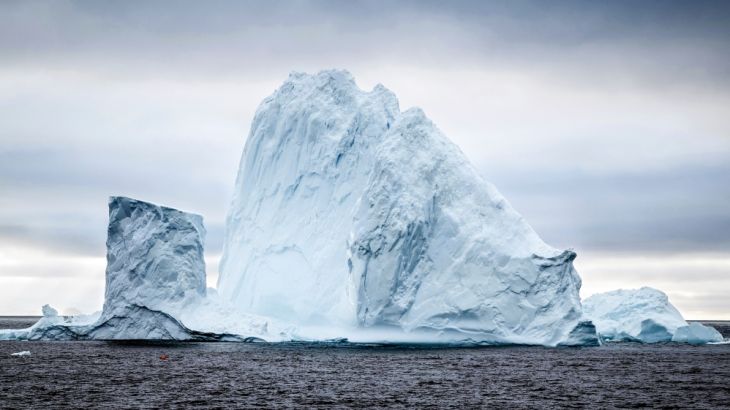A frigid journey into Antarctica
The Weddell Sea in Antarctica is the coldest sea on the planet yet is home to an extraordinary ecosystem.

From the golden age of polar exploration a century ago to modern day scientific expeditions, the wind-bitten city of Punta Arenas is the Chilean gateway to the Antarctic. The culture and history of this frontier-town are entwined with the Southern Ocean.
In the main square of Plaza Munoz Gamero, a statue of Ferdinand Magellan looks out towards the strait that bears his name, a route he discovered in 1520 that allowed mariners to avoid the shipwreck hell of Cape Horn until the building of the Panama Canal.
Keep reading
list of 4 itemsTurtles swimming to extinction in Malaysia as male hatchlings feel heat
Could shipping containers be the answer to Ghana’s housing crisis?
Thousands protest against over-tourism in Spain’s Canary Islands
To reach Antarctica from Punta Arenas today, you have two options. Fly or sail. Fly and you’re there in 90 minutes. Go by ship and it can take six days. We flew out. And sailed back, which is another story.
Leaving sunny, leafy Punta Arenas and landing on King George Island on the tip of the Antarctic Peninsula just one and a half hours later is a mind-blowing experience. It’s Earth but not as we know it.
‘Welcome aboard’
It’s murky and biting cold. The wind is slashing horizontal rain across the runway. A dirty yellow vehicle on caterpillar tracks whirrs by. In the distance, shrouded in swirling mist, a group of cruise ship tourists huddle, hoods up, surrounded by their luggage, resignedly awaiting their flight out.
On top of a hill, you can just make the surreal sight of a Russian Orthodox Church overlooking the research base it serves. In this parallel universe, Russia’s immediate neighbour is Chile, two of several bases on the island conducting various degrees of atmospheric and environmental research. Uruguay’s down the road and they’re neighbours with China.
And then as I try and gather myself, a penguin walks by, looks up at me slightly quizzically, potters about for a bit, and waddles off.
Within moments I’m whisked off by the Greenpeace team, bundled into a bright orange survival suit and hurtling across freezing rough Antarctic waters, salt spray stinging the eyes.
Next, our boat is slapping into the green painted side of a ship and across the din of the engine and a howling wind, an Argentinian deck hand grabs my collar, hauls me up the ladder and she shouts: “Welcome Aboard!”
And there I am on the Arctic Sunrise, an icebreaker. In Antarctica. Home for the next two weeks.
The campaign
Warmed up and dried out, I chat to the Greenpeace campaign leader, Will McCallum, who tells me we’re making way immediately for the Weddell Sea, the site of the proposed ocean sanctuary, five times the size of Germany.
“It’s not certain how far we’ll get,” said Will. “There’s a fair amount of ice in the way but we hope at least to get to the 64th parallel, which is where the proposed protected area would begin.
“It’s described by everyone as a pretty inhospitable place so that’s the feeling we’re going to get as we round the corner!” he said, pointing at a map showing our route along the Antarctic Sound into the Weddell Sea.
So I spend my first night on board. It’s a ship with hot showers, hot meals and comfortable cabins. But despite modern comforts, our hopes of success depend on factors no different to those of the polar explorers of a century ago – weather, ice conditions and a good deal of luck.
![Aerial view taken off James Ross Island in the Weddell Sea, in the Antarctic [Daniel Beltrá/Greenpeace]](/wp-content/uploads/2018/03/19a763f267cc4d9f8b7bf25e6442c464_18.jpeg)